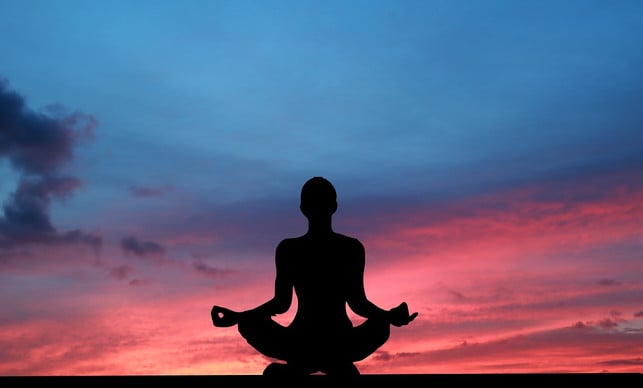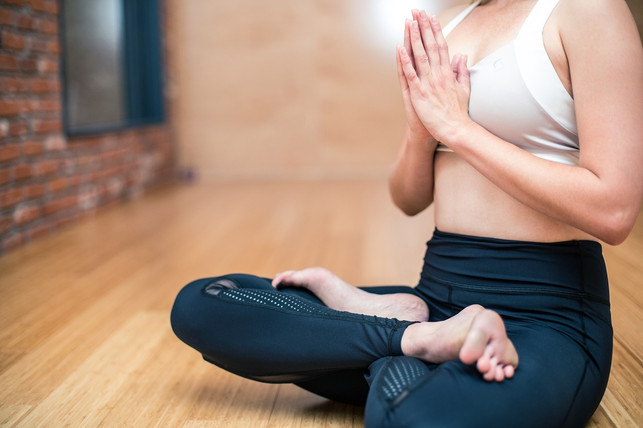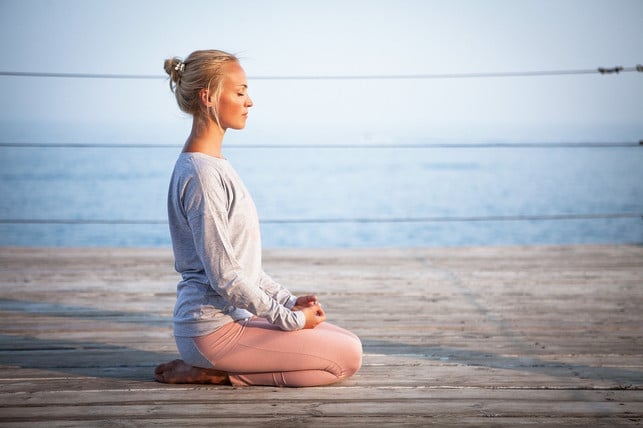
The right attitude is crucial for meditation – and not every seating position is suitable for you personally. We’ll show you how to find the right meditation seat.
You can learn correct meditation. This also includes taking a suitable meditation seat. The aim of the meditation seat is that you feel “grounded”. It is therefore important that your body is completely relaxed below the waist. For beginners: Inside, some seating positions are initially uncomfortable and not long to endure. So you should slowly approach yourself.
In this article we introduce you to different positions and give general tips on how to find a good meditation seat for your needs.
Good to know: regular meditation not only relaxes, but can also help with mental illnesses in emotionally challenging phases of life. For example, meditation in depression and anxiety disorders can be helpful.
Preparations for meditation
Before you go to the meditation seat, you should consider the following tips:
-
Put jewelry and glasses: Accessories can interfere with meditation. Foot chains can cause pressure points, for example. With a Mala meditation you can use a mala. Such prayer chains with pearls are used in meditation in Buddhism and Hinduism. For example, you can use the pearls to count how often you have breathed in and exhaled or have a mantra. That helps you to focus.
-
Ceiling over your shoulders: You can quickly get cold in the meditation seat because you keep your body very quiet. So that you don’t freeze, a blanket can help. Just put them over your shoulders and your back when you sat down.
-
Shoes from: shoes only bother you when meditating.
-
Cozy clothing: tight pants and tops can quickly make sitting in every meditation seat uncomfortable. So put on soft and cozy clothing.
Tip: You can meditate almost anywhere. In order to get into the right mood and signal your body that it is time for meditation, you can also set up a special meditation corner.
The keeping of the upper body is the same for all seats

You can meditate in different sitting positions, depending on what is most convenient for you. But with all positions, the keeping of the upper body and the arms remains the same. Therefore, you can transfer the instructions for keeping the upper body to every meditation seat.
- Your coccyx forms a straight line with your head. Sit down right and tie your hip forward. The natural curvature of the back is quite normal.
- The shoulders are relaxed and not pulled up. Your gaze is going to the front.
- You can either put your hands in front of your chest (Anali Mudra) or put your knee back on your knees. Here you can shape a circle with your middle finger and thumb and stretch out the other fingers (Mudra Sanskrit). Alternatively, you can also make a circle with your index finger and your thumb (Jnana Mudra).
Meditation seat 1: Half Lotusitz
Half the lotus seat is also called “complete sitting position”. This attitude is similar to the tailor seat, but the position of the heels is different. With these steps you come to the meditation seat:
- Sit on a yoga mat or carpet. The surface shouldn’t be cold.
- First go to the normal tailor seat.
- Then take a heel and pull it to your pubic bone. You are now half on this foot.
- Place the back of the foot on the lower leg of the other leg.
- Bring the upper body into an upright posture.
Meditation seat 2: Lotusitz

You can also go to meditate in the normal lotus seat (padmasana). This is a bit more difficult and requires a little practice. So you come to the Lotus meditation seat:
- Sit on the mat with her legs outstretched.
- Place your right foot on your left thigh. The sole of the foot points upwards.
- Then bend your left leg and put your foot on the right thigh.
- Both feet are close to the stomach and can also touch it. The tips of the toes point outwards and your knees touch the floor.
- Now put the upper body into an upright posture.
Alternatives in physical complaints or restrictions

In the event of pain in the back, in the hip or in the knee, it is better if you do without the meditation seat described above. But there are alternatives with which you can still meditate while sitting.
-
In the case of back pain: Sitting on the bare floor can cause back pain in the coccyx even with a matte. There are meditation pillows that promote an upright posture and relieve the back a little. The higher the pillow, the further forward you tip your pelvis and the more upright your posture becomes. You can also achieve the same effect with a folded or rolled blanket.
-
Problems with the hip opening: The hip joint is opened at the lotus seat and the knees lay down aside. If this attitude causes pain to you or you cannot put your knees properly, you should do without sitting in this position. As an alternative, the heel seat is ideal (Vajrasana). To get into this position, you kneel on the floor and sit on your heels. Then tie the pelvis forward and straighten your back. This meditation seat can press on your feet after a while. To avoid this, you can infer a small pillow.
-
In the event of knee pain: You should do without the lotus or heel seat with knee problems. But you have the opportunity to sit on a chair. The chair should be firm and hard, you don’t need a backrest. Here, too, you tip your pelvis forward again to get into the upright posture. Place your calves so that they form a 90-degree angle to the thighs and set up your upper body so that it is also at the right angle to the thighs.
Extra tip: your feet fall asleep while meditation? That doesn’t have to be! Read this guide article: Feet fall asleep when meditating? You can do that
Meditation lying down
You don’t have to sit in the meditation, but can also lie. The lying meditation position is called Shavasana and is particularly suitable for starting meditation exercises.
- Also take a yoga mat or carpet for this meditation seat.
- Put your legs hip width and put your arms up on the mat with the palms. Make sure that you leave some space between your hands and the hip.
- In the event of neck problems, you can put a flat pillow under your head.
- You can bring your fingers in this seating position, as described above, either to the Mudra Sanskrit or to Jnana Mudra.
Revised by Paula Boslau
Read more on utopia.de:
- Meditation to fall asleep: This is how it works
- Healthy yoga: What you should pay attention to when buying yoga mats & clothing
- Yoga for beginners: Inside – these tips make it easier for you to start
** marked with ** or orange underlined Links to sources of supply are partially partner links: If you buy here, you will actively support Techzle\.com, because we will then receive a small part of the sales proceeds. More information.